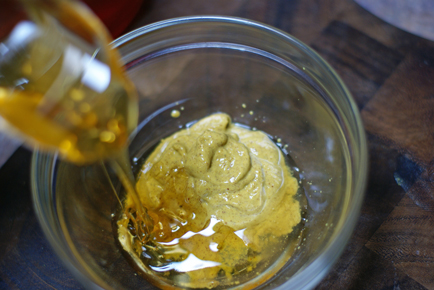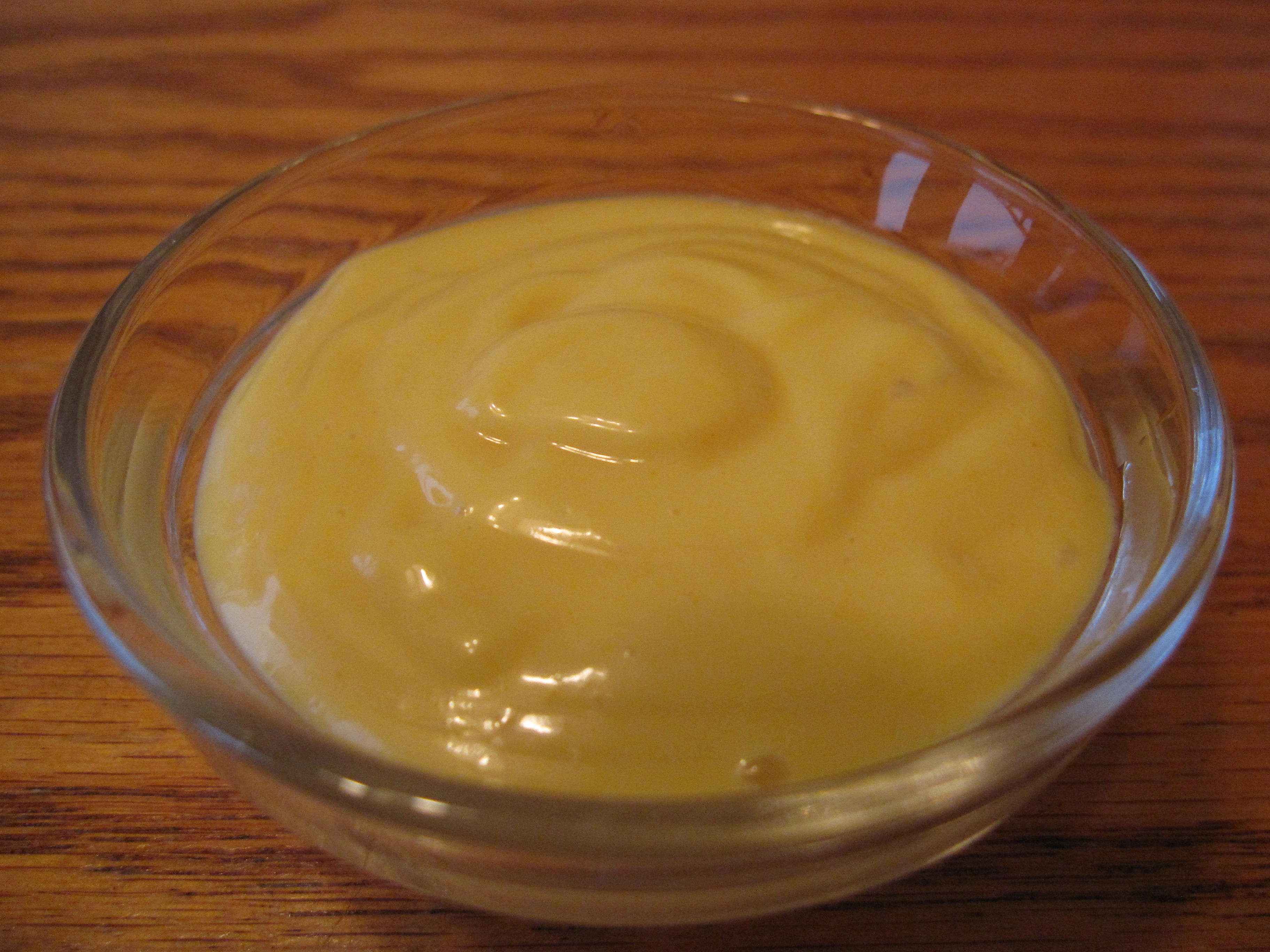Honey Mustard Sauce
Mustard is a condiment made from the seeds of a mustard plant (white or yellow mustard, Sinapis hirta; brown or Indian mustard, Brassica juncea; or black mustard, B. nigra). The whole, ground, cracked, or bruised mustard seeds are mixed with water, salt, lemon juice, or other liquids, and sometimes other flavorings and spices, to create a paste or sauce ranging in color from bright yellow to dark brown. English mustard is among the strongest, made from only mustard flour, water, salt and, sometimes, lemon juice; but not with vinegar. French-style Dijon Mustard, or Moutarde de Dijon, has added vinegar, and is milder. Bavarian Sweet Mustard or Süsser Senf is milder still.[1] Homemade mustards are often far hotter and more intensely flavored than commercial preparations.[2] A strong mustard can cause the eyes to water, sting the palate, and inflame the nasal passages and throat. Mustard can also cause allergic reactions: Since 2005, products in the European Union must be labelled as potential allergens if they contain mustard.[3] Commonly paired with meats and cheeses, mustard is a popular addition to sandwiches, hamburgers, and hot dogs. It is also used as an ingredient in many dressings, glazes, sauces, soups, and marinades; as a cream or a seed, mustard is used in the cuisine of India, the Mediterranean, northern Europe, the Balkan States, Asia, North America, and Africa,[4] making it one of the most popular and widely used spices and condiments in the world.















No comments:
Post a Comment
Note: Only a member of this blog may post a comment.